#Video streaming App Development
Explore tagged Tumblr posts
Text
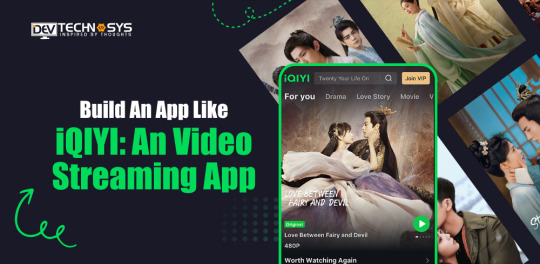
Introducing our video streaming app developed by Dev Technosys, like iQIYI. Enjoy an extensive library of movies, dramas, and shows, all in high-definition. With seamless streaming and user-friendly interface, discover new content tailored to your preferences. Explore trending videos, create playlists, and interact with fellow viewers. Experience entertainment like never before with our cutting-edge app.
#Build An App Like IQIYI#Video Streaming App Development#Cost To Build An App Like IQIYI#Features Of App Like IQIYI
0 notes
Text
In the growing world of digital media, podcasts have emerged as a powerful and engaging form of content. Live podcast streaming software is crucial in delivering content to a global audience.
Podcast streaming software refers to the technology that allows the distribution and consumption of podcasts over the Internet. It facilitates the seamless streaming or downloading of audio content, allowing users to explore various topics, genres, and creators.
#custom software development company#Develop a podcast streaming app#live streaming podcast software#Podcast streaming software development#streaming app development#video streaming app development#Web streaming app
0 notes
Text
Many similar platforms have witnessed an increase in their users by up to 200%. This article explores what features make educational OTT platforms effective in their role as educational providers and how they benefit the masses in decreasing the literacy gap.

#educational OTT platforms#OTT app development company#video streaming app development#OTT platform development
0 notes
Text
Overcoming Challenges: Integrating VR in Video Streaming Apps
Bringing VR to video apps is your next big goal. But it’s full of hurdles, right?
You want to create incredible, immersive worlds. But VR is complicated to code and optimize. Frustrating!
Do high-resolution 3D videos overload your pipeline? Do VR control schemes confuse users? Does poor device compatibility stall adoption?
We feel your pain! But don’t despair. Solutions exist. With the right skills, you can fix the problems. Hurdles become launch pads.
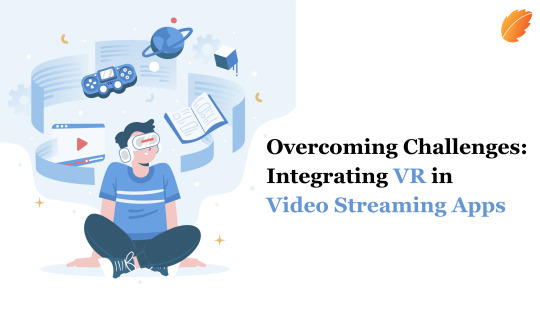
In this blog, we'll tackle the common issues. You'll learn proven tips to:
- Optimize performance
- Design good VR interfaces
- Fix compatibility bugs
- Improve video quality
- And more
You’ll learn best practices for performance, UI/UX, stitching, and more. Level up your video streaming app development game.
The challenges are real but surmountable. Your dream immersive worlds are achievable! Let’s dive in.
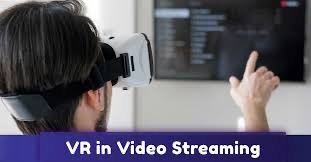
Overcoming Challenges: Integrating VR in Video Streaming Apps
“According to Frost & Sullivan analyst Avni Rambhia, delivering live VR video presents immense technical hurdles like high latency, limited reach, and maintaining quality.
The huge file sizes require optimizing every stage, from encoding to delivery, to render smoothly. Rambhia notes that supporting the low latency and resolution needed for immersion on a wide array of devices is difficult. And balancing bandwidth efficiency with visual fidelity intensifies the classic quality versus file size tradeoff.
She states that innovative processing and transmission approaches are still evolving to conquer these multifaceted challenges. But Rambhia points to creative solutions like adaptive bitrate streaming, field of view prefetching, and advanced codecs that can pave the path to seamless, immersive live VR streaming.”
Technical Problems with Solutions
Testing and Performance:
Problem:
Integrating virtual reality into video streaming apps remains an incredibly challenging undertaking, leaving many developers frustrated.
The wide variability in VR devices with distinct performance capabilities makes optimization a nightmare. Fragmented hardware and software ecosystems lead to endless compatibility issues and make iterative testing feel futile.
Solution:
But there is hope! While intricate and demanding, integrating virtual reality into streaming video does not have to drive developers to tear their hair out. The key is methodical, structured testing and performance optimization across the spectrum of devices. By taking time to profile performance under different conditions thoroughly, developers can isolate inefficiencies and incrementally improve experience.
For example, optimized batching of draw calls, which means combining multiple draw calls into a single call, can work wonders to boost frame rates. Regularly measuring key metrics like latency and frames per second while deliberately tweaking configurations illuminates the path forward. With concerted discipline and commitment to performance, integrating VR can transition from hindrance to delightful reality.
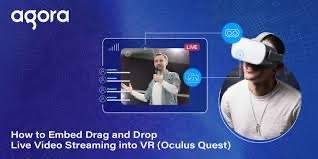
UI/UX for VR:
Problem:
Designing intuitive user interfaces for virtual reality is very challenging and frustrates many video streaming app developers. Traditional 2D menus don't work well in immersive 3D environments that rely on gaze, motion, and voice inputs. VR requires completely rethinking interface approaches from scratch.
Without established best practices to follow, UI/UX elements often feel clumsy, confusing, and uncomfortable for users.
Solution:
However, there are solutions for creating better VR interfaces! The key is designing UI elements that feel natural for looking around and simplified controls like pointing or speaking.
For example, media playback controls can be positioned on users' wrists for easy access. Audio cues can guide attention, while animations provide visual direction. Careful 3D positioning and sizing reduce fatigue.
Though still evolving, UIs tailored to VR interactions can create intuitive, enjoyable experiences. With some creativity, the challenges of VR interfaces can be overcome.
Codec and Compression:
Problem:
Dealing with large file sizes poses a major challenge for video streaming app developers building VR video streaming apps. VR's wide field of view and high resolution consume far more storage and bandwidth than standard video.
Using old compression standards squashes visual quality, yet lax compression leaves files bloated. This trade-off between efficiency and quality can frustrate developers and disappoint users.
Solution:
The innovation of new codecs paves the way forward! Advanced standards like VP9 and AV1 are explicitly designed for VR content, balancing high visual fidelity with smaller file sizes. Though compression requires careful fine-tuning, these modern codecs handle VR video remarkably well.
Features like prioritizing the user's current view further improve efficiency. With testing and smart implementation, developers can leverage next-generation codecs to address VR video's demanding storage needs while maintaining quality. The file size hurdle is cleared through innovation.
360-degree Video Stitching:
Problem:
Seamlessly stitching together 360-degree video poses headaches for video streaming app developers seeking immersive VR experiences. Shooting with multiple synchronized cameras captures the full 360 view, but blending their feeds into one unified sphere strains even the most robust algorithms.
Misalignments and color differences between cameras lead to jarring visible seams and distortions in the final output that ruin immersion. Developing custom stitching software requires immense effort. Out-of-the-box solutions leave obvious artifacts. Despite its massive creative potential, this fundamental technical hurdle drags down 360 video adoption.
Solution:
Fortunately, steady progress is being made to solve 360 stitching challenges. Specialized software and libraries greatly ease the process with optimized projections and blending. While tedious tuning is still required, algorithms that adaptively minimize seams and ghosting artifacts yield increasingly seamless results.
For live 360 video, real-time GPU-accelerated stitching brings this powerful medium to life. As the underlying technology improves, developers can focus less on wrestling with stitching and more on captivating, immersive experiences. 360 video's technical troubles are clearing, unveiling thrilling creative possibilities.
Device Compatibility:
Problem:
Achieving broad device compatibility remains an immense challenge for VR developers. The fragmented ecosystem of headsets, platforms, and specifications creates substantial technological hurdles and labor costs.
Optimizations for one system often break experiences on another. Rigorously testing across this complex web of devices consumes significant time and resources. Supporting just a few platforms risks alienating users, yet broader compatibility is arduous.
Solution:
Cross-platform tools offer respite from the compatibility problem. Game engines like Unity and Unreal provide a unified development environment across VR devices.
This "build once, deploy anywhere" flexibility substantially reduces the headache of supporting disparate native platforms. Some targeted per-platform tweaking is still required, but robust cross-platform tools empower developers to focus on creating great experiences rather than wrestling with compatibility. As these tools mature, video streaming app development will transcend fragmented hardware to reach broader audiences.
Interactivity and Realism:
Problem:
Providing highly interactive, realistic VR experiences remains challenging for developers. Users want environments where virtual objects respond believably to their actions. However, simulating real-world physics and interactivity requires extensive programming and optimization.
Development bottlenecks frequently arise when trying to make all objects reactive and enable advanced features like shadows and textures. Due to these technical constraints, VR often falls short of user expectations for immersive realism.
Solution:
Fortunately, progress is being made towards more interactive and realistic VR. Efficient physics engines and rendering techniques now permit more advanced real-world simulations. Integrating gesture/voice recognition expands natural interaction capabilities. Prioritizing visualized areas via eye tracking optimizes realism.
While still demanding, creating reactive, believable VR worlds is becoming more viable through performance optimizations, resource prioritization, and physics innovations. As these advancements continue, development barriers to immersive realism will lower. Careful engineering and smart trade-offs make interactive realism steadily more achievable.

Non-technical
Content Production
Problem:
Quality VR content creation remains challenging, given the specialized skills and gear required. Capturing 3D video, spatial audio, and stitching 360 footage demands expertise most developers lack. The expensive cameras, microphones, and software add further obstacles.
Even with the right tools, mastering depth perception techniques takes great effort. As a result, many video streaming apps have subpar content that degrades user experience. The complexity of professional VR production excludes many developers.
Solution:
There are ways to overcome VR content creation hurdles. Partnering with experienced VR production houses is one valid approach. Investing in training for in-house teams to learn needed skills is another option.
As best practices emerge, more creators will grasp the nuances of quality VR content. Enabling user-generated content submission also shows promise. While still evolving, the gaps in VR content skills and costs can be addressed through training, collaboration, and user communities. The quality and accessibility of VR content production will progress through knowledge sharing.

Monetization
Problem:
Finding profitable pricing models is challenging for VR developers. Producing high-quality, immersive VR content is expensive, requiring sufficient revenue streams. However, monetization strategies remain unclear, as VR is still an emerging space.
Subscription models provide predictable recurring income yet require ongoing value to justify the costs and avoid limiting user adoption. Pay-per-view and in-app purchases for premium content risk undervaluing the VR experience if not priced appropriately.
Ads can generate revenue but damage immersion when inserted into VR environments. Offering apps entirely for free leaves no profits to cover expenses.
Developers face difficulties balancing the need for revenue through monetization with delivering perceived value for users. The ideal equilibrium between income generation and preserving high-quality VR experiences is elusive and requires ongoing experimentation.
Solution:
Viable monetization paths for VR are emerging despite the difficulties. The key is tailoring pricing models to the specific app and audience.
For example, productivity tools may use subscriptions, while one-time art experiences could offer pay-per-view. Hybrid approaches like subscriptions with premium in-app purchases also work.
Through deliberate experimentation suited to their goals, video streaming app developers can find profitable approaches as models and expectations coalesce. Success lies in aligning monetization with the value provided to users.

VR Streaming in Video Streaming Apps; Use Cases
Some leading companies have already integrated VR streaming and are demonstrating its potential:
NextVR
NextVR partners with major sports leagues like the NBA, NFL, MLB, and others to deliver live games in virtual reality. Fans can feel like they're courtside or on the field surrounded by the action.
Key features:
- Uses multiple synced cameras to stitch together a seamless 360-degree video
- Supports social viewing with nearby virtual avatars
- Spatialized audio matches soundscape to head movements
- Integrated stats and info overlays for fans
Sliver.tv
Sliver.tv focuses on esports by streaming tournaments for popular competitive games in VR. Titles covered include League of Legends, Counter-Strike, DOTA 2, Call of Duty, and more.
Key features:
- Immerses viewers right in the arena near team boxes
- Lets fans watch from first-person views of different players
- Overlays match stats and standings directly in VR space
- Solid performance with minimal lag or compression artifacts
Oculus Venues
Venues on Oculus headsets deliver communal VR viewing parties for live events. Attendees join as avatars and can voice chat while watching concerts, sports, conferences, and more together.
Key features:
- Avatars and spatialized voice give a sense of virtual togetherness
- Native Oculus platform integration makes joining events seamless
- High fidelity social presence being jointly immersed in an experience
These examples demonstrate the expanded viewing possibilities already enabled by integrated VR streaming in video streaming app development. As technology develops further, VR promises to transform digital entertainment and engagement fundamentally.
Key Takeaway-
Bring Your Video Streaming into the Future with VR
The path to integrated VR streaming presents immense opportunities as well as complex obstacles. But mobile app development partners with VR specialization are key to unlocking this future. By leveraging core competencies in mobile video streaming and then building on VR-specific engineering expertise, these VR app developers enable media companies to traverse the technical hurdles on the road ahead.
With the right strategic partnership, the possibilities of immersive VR entertainment can be brought to reality. Forward-thinking mobile app developers like Consagous Technologies, with our 360 engineering capabilities, are invaluable allies for media innovators ready to redefine digital experiences and engagement through virtual worlds. Together, any challenges that arise can be converted into opportunities.
Get started today by contacting our VR specialists to discuss your streaming goals. Be among the first media innovators to bring next-gen immersive entertainment to your audience. The future of video streaming app development is near – partner with Consagous to meet it head-on.
0 notes
Text
Can You Build the Next TikTok? Here’s What You Need to Know in 2025
TikTok's massive success has sparked a wave of innovation in the short-form video space. But building a similar platform doesn’t mean copying — it means creating something unique, scalable, and monetizable. That’s where finding a reliable development partner for social video apps becomes essential. With access to the right infrastructure, you can fast-track development without compromising on performance or design.
For those planning to enter the video-sharing space, it’s worth exploring custom solutions modeled after successful short-video platforms. From content discovery to creator tools, modern clone apps offer plug-and-play flexibility with room to innovate. These platforms aren’t just about videos; they’re about creating a community, retaining users, and enabling creator-driven revenue.
What Makes TikTok Work – And How You Can Do It Differently
TikTok’s core success lies in its algorithm, simplicity, and creator-first approach. But there's still room for alternatives that offer:
Regional language support
Creator revenue-sharing options
Content categories that cater to niche audiences
Tools that foster community interactions
Launching a differentiated TikTok-like app isn’t about reinventing the wheel—it’s about fine-tuning it for specific needs.
Must-Have Features for Your TikTok Alternative
To compete with or even complement TikTok, your platform should include:
AI-driven personalized feeds
Easy-to-use video editing tools
Livestreaming and event features
Support for user monetization
Scalable cloud infrastructure
These are not just features—they're strategic advantages that help with acquisition and retention.
Monetization Models That Actually Work
A TikTok clone can generate revenue in several ways:
Offering ad space for businesses
Partnering with influencers for branded content
Implementing in-app purchases for premium tools or features
Subscription plans for creators or viewers
A hybrid monetization approach ensures steady income from multiple streams.
Why Choose Miracuves for TikTok-Like App Development?
Miracuves brings a powerful combination of technical expertise and market insight. Their TikTok clone development framework is robust, customizable, and future-ready — allowing startups to go live in record time while maintaining top-tier performance.
Final Thoughts
The short-video boom is far from over. If you’ve ever considered launching your own video-sharing platform, 2025 might be your moment. With the right tech partner and a user-first strategy, you can build more than just an app — you can create a thriving ecosystem.
#TikTok clone app#TikTok clone development company#short video app development#video sharing app like TikTok#create TikTok clone#white-label TikTok clone#TikTok alternative app#social media app development#video streaming app clone
0 notes
Text
Navigating the New Era of OTT Service Providers: The Role of Mogi I/O
In recent years, the entertainment landscape has been dramatically transformed by the emergence of Over-The-Top (OTT) service providers. This shift has revolutionized how audiences consume media, offering unparalleled convenience and variety. As traditional television and cable networks face stiff competition, companies like Mogi I/O are stepping up to redefine content delivery and enhance user experience. This article explores the evolution of OTT services, their implications for the industry, and the unique position of Mogi I/O in this dynamic environment.
Understanding OTT Service Providers

OTT service providers deliver content directly to consumers via the Internet, circumventing traditional broadcast and cable distribution channels. This model allows viewers to access a wide array of media content—movies, TV shows, documentaries, and live events—on their terms. Notable players in this space include Netflix, Hulu, Amazon Prime Video, and Disney+.
The appeal of OTT services lies in their flexibility. Viewers can choose when and how they watch content, a stark contrast to the rigid scheduling of traditional TV. As the demand for on-demand viewing continues to grow, OTT platforms are increasingly becoming the go-to option for consumers.
Factors Driving the Growth of OTT Platforms
Several key factors contribute to the rapid expansion of OTT platforms:
1. Evolving Consumer Preferences
Today's audiences seek content that fits their lifestyles. They prefer the ability to binge-watch their favorite shows or watch content on mobile devices while on the go. This shift in behavior has made OTT services a favored choice, allowing for on-demand viewing that traditional media struggles to provide.
2. Cost-Effectiveness
OTT services typically offer more affordable options compared to traditional cable subscriptions. Many platforms feature tiered pricing structures, allowing users to select plans that suit their financial needs. The ability to watch content on multiple devices without additional fees makes these services even more appealing.
3. Investment in Original Content
To attract and retain subscribers, many OTT service providers have invested heavily in original programming. This strategy not only diversifies their content library but also builds a loyal audience base. Popular series and films produced by platforms like Netflix and Amazon Prime Video have set new standards for quality and creativity, drawing viewers away from conventional media.
4. Global Accessibility
OTT platforms are not bound by geographic limitations. They offer global access to diverse content, allowing users from various regions to engage with programming that reflects their interests. This globalization opens new revenue streams and subscriber bases for OTT providers.
The Impact of OTT Service Providers on Traditional Media
The rise of OTT service providers has significantly disrupted traditional media:
1. Declining Cable Subscriptions
As more viewers opt for OTT services, traditional cable subscriptions have plummeted. This trend forces cable providers to reconsider their business models and enhance their offerings to retain subscribers.
2. Increased Competition
The emergence of OTT platforms has intensified competition among media companies. Traditional networks are now compelled to innovate and either develop their streaming services or partner with existing OTT providers to remain competitive.
3. Evolution of Advertising Strategies
The shift toward OTT platforms is altering how advertisers approach marketing. With targeted advertising capabilities, OTT services enable brands to reach specific demographics more effectively than traditional methods. This shift challenges broadcasters to rethink their advertising strategies and find new ways to engage audiences.
The Future of OTT Service Providers
As technology continues to advance, the future of OTT service providers looks promising:
1. Personalized User Experiences
Advancements in artificial intelligence (AI) and machine learning are set to enhance the personalization of content recommendations. By analyzing viewer behavior and preferences, OTT platforms can deliver tailored content, increasing viewer engagement and satisfaction.
2. Growth of Live Streaming
The demand for live streaming is on the rise, especially for events such as sports and real-time shows. OTT providers are likely to invest in these capabilities, providing more opportunities for interactive viewing experiences.
3. Virtual and Augmented Reality Integration
The incorporation of virtual reality (VR) and augmented reality (AR) into OTT experiences has the potential to revolutionize how content is consumed. By offering immersive experiences, OTT providers can engage viewers in unique ways, blending reality with entertainment.
4. Niche Market Focus
As the OTT landscape continues to evolve, providers may seek to cater to niche markets, allowing them to build dedicated audiences. By focusing on specific interests or demographics, OTT services can foster community and loyalty among viewers.
Conclusion
OTT service providers have reshaped the entertainment industry, granting viewers unprecedented access to a vast array of content. This shift reflects changing consumer preferences, advancements in technology, and the increasing demand for personalized viewing experiences. As traditional media adapts to this new reality, the outlook for OTT services is bright, promising innovative and engaging content for audiences worldwide.
In a world where on-demand entertainment is the standard, OTT service providers are set to play a crucial role in the future of content consumption. Companies like Mogi I/O are strategically positioned to lead this transformation, embracing the opportunities presented by the OTT revolution and redefining audience engagement. By prioritizing quality, accessibility, and innovation, Mogi I/O aims to significantly contribute to the ongoing evolution of the entertainment landscape, ensuring that viewers receive the best in modern content delivery.
0 notes
Text
#Build a Cost-Effective OTT App Like Hulu#OTT App Development Company#Video Streaming Apps#OTT App Like Hulu#Streaming services#OTT app development#Build OTT App Like Hulu#OTT App Development Experts#hiring Flutter Mobile App Developers#Custom mobile app development services#Cost to Develop an OTT App
0 notes
Text
Our video streaming development solutions provide a fast and cost-effective way to launch your own app with best video streaming development services.
Video Streaming Services, video streaming development solutions, Live video streaming app solutions

0 notes
Text
Overcoming Challenges: Integrating VR in Video Streaming Apps
Explore the realm of immersive entertainment with insights from industry experts! We uncover the hurdles of seamlessly integrating VR in video streaming app development and provide actionable solutions. Elevate your app's performance and keep your audience engaged in this dynamic VR landscape.
0 notes
Text
Unveiling the Magic: Journey into the World of Video Streaming App Development Companies
In the fast-paced digital era, the demand for high-quality video streaming experiences has skyrocketed, paving the way for innovative solutions provided by Video Streaming App Development Companies. These tech-savvy firms play a pivotal role in shaping the future of entertainment, offering seamless platforms that connect content creators with audiences worldwide.
The Rise of Video Streaming Apps
The advent of smartphones and high-speed internet has transformed the way we consume media. Video streaming apps have become the go-to choice for users seeking on-the-go entertainment, leading to a surge in the development of these applications. This trend has given birth to a new breed of tech companies specializing in crafting cutting-edge solutions for video streaming.
Crafting Experiences, Not Just Apps
Video streaming app development is not just about coding; it's about creating an immersive and delightful user experience. The top-tier companies in this domain understand the importance of user interface (UI) and user experience (UX) design. They meticulously craft apps that are not only visually appealing but also intuitive, making it easy for users to navigate and enjoy content effortlessly.
Robust Backend Infrastructure
Behind every seamless streaming experience lies a robust backend infrastructure. Video streaming app development companies invest heavily in creating scalable and reliable server architectures. This ensures smooth content delivery, even during peak usage periods, without compromising on video quality. Scalability is key, as it allows these apps to accommodate growing user bases without sacrificing performance.
Features that Define Excellence
Leading video streaming app development companies are distinguished by the features they offer. From personalized content recommendations and offline viewing options to multi-platform compatibility, these apps are equipped with functionalities that cater to the diverse needs of modern audiences. Integration with smart devices, social media sharing, and advanced search algorithms are just a glimpse of what users can expect.
Embracing the Future: AI and Machine Learning
To stay ahead in the competitive landscape, video streaming app development companies are incorporating artificial intelligence (AI) and machine learning (ML) into their solutions. These technologies analyze user preferences, predict content choices, and enhance the overall recommendation system, creating a more personalized and engaging experience.
Security: A Paramount Concern
As the popularity of video streaming apps soars, so does the need for robust security measures. Leading development companies prioritize data encryption, secure authentication processes, and regular security audits to safeguard user information and ensure a secure streaming environment.
Conclusion: Pioneering the Future of Entertainment
In conclusion, the realm of video streaming app development is both dynamic and promising. The companies at the forefront of this industry are not just building applications; they are crafting experiences that resonate with the ever-evolving preferences of users. As technology continues to advance, we can only anticipate more innovations and groundbreaking features from these trailblazing companies, shaping the future of entertainment for generations to come.
0 notes
Text
New Dragon Age: The Veilguard Journal entry:
"Journal #9 Hans Zimmer & Lorne Balfe Co-Composers Dragon Age: The Veilguard’s Composers Announcement"

"Hey everyone! Today, we’re so happy to announce that two-time Oscar-winner Hans Zimmer and Grammy-winner Lorne Balfe have co-composed the Official Soundtrack (OST) for Dragon Age: The Veilguard, the new single-player fantasy RPG experience coming to PlayStation 5, Xbox Series X|S and PC via Steam, EA App, and Epic Games Store on October 31, 2024. The legendary composers have collaborated on dozens of projects throughout their careers and have worked closely with the development team at BioWare to create a score celebrating the world of Thedas and its heroes. Fans will be able to pre-order the Official Soundtrack album beginning October 18th on iTunes and Amazon Music, with the formal release to follow on November 1st via Lakeshore Records. Moreover, in celebration of the announcement, Dragon Age: The Veilguard Main Theme, has been released as the first single from the official soundtrack, and can be downloaded and streamed now on all major music services such as Spotify, iTunes, and more. “One of our goals with the music for Dragon Age: The Veilguard was to provide a strong anchor between the world of Thedas and the diverse characters that inhabit that world,” said Cody Behiel, Audio Director for Dragon Age: The Veilguard. “We wanted to ensure that throughout the game's story, whether at its most epic or its most intimate, players were able to feel their actions connect to the personal relationships they have been fostering. Working with Hans and Lorne took these ideas to greater emotional heights than we thought possible and I am so excited for players to experience it.” Oscar-winner Zimmer, one of the world’s most renowned composers, has won numerous awards and honors for his scores in such films as Dune, Dunkirk, Interstellar, Inception, and many more. With over 100 film scores to his credit, Dragon Age: The Veilguard is the first video game soundtrack composed by Zimmer in nearly 10 years. Speaking about his work on Dragon Age: The Veilguard, Hans Zimmer said, “Epic stories lend themselves to epic scores, and the narrative tapestry BioWare has woven in The Veilguard never left me wanting for inspiration, be it during the game’s moments of shining heroism or darkest emotional pitfalls. I’m proud to have shared the journey of creating the musical backdrop for the latest Dragon Age adventure with Lorne and the entire design team.” GRAMMY Award-winner Balfe has over 170 composer credits across movies, TV and games, including Call of Duty: Modern Warfare 2, Assassin's Creed III, Assassin's Creed: Revelations, and Beyond: Two Souls, all of which received nominations for Best Original Music from the BAFTA Games Awards. “The world of Dragon Age is an unprecedented immersive experience, and never more so than in Dragon Age: The Veilguard,” said Lorne Balfe. “Crafting this score alongside Hans Zimmer has allowed us to bring an epic new majesty to the realm of Thedas, bringing these characters and their stories to the next level. I cannot wait for people to play this game.” Players can pre-order Dragon Age: The Veilguard now on PlayStation 5, Xbox Series X|S and PC. We still have a few more things to talk about before release, and we hope you enjoy our main theme in the meantime! — The Dragon Age Team"
[source]
(emphasis mine)
#dragon age: the veilguard#dragon age: dreadwolf#dragon age 4#the dread wolf rises#da4#dragon age#bioware#video games#longpost#long post
147 notes
·
View notes
Note
Idk if u answered this before but would color have social media
cause idk why but I find it funny as hell that they would know brainrot and the souls would be laughing about it so much
I personally don’t think he’d be on social media much, at least not compared to Epic or Killer.
He’d definitely have a phone and probably has a few games and social media apps downloaded, like Tumblr mainly because he likes the stimboards and looking at posts about his interests, probably has YouTube.
I can only see him having TikTok because Killer and Epic kept sending him videos via text messages that he could never watch because he didn’t have the app downloaded.
Other than that, I think not only is Color very behind on recent apps, trends, memes, etc. due to his decades of isolation and having to figure out how to operate and adjust to technology again (especially recently developed technology that he might’ve missed out on during his time in the Void), but I also don’t think he spends much time on his phone except during periods where he felt too alone and isolated (during his time in the hospital perhaps) and during the period where his and Killer’s friendship was still developing during Killer’s time under Nightmare.
I’m considering the idea that maybe lurking on social media apps, not doing anything but watching videos and reading comments or just silently watching other people talk to each other in discord servers or group chats, could potentially help Color feel less alone without the overwhelm and stress of having to physically be around people before his mind and body has time to adjust to it.
But there’s also the possibility that lurking in group chats and not being acknowledged because he’s not chiming in to chat—or worse, deciding to chime in and being ignored—could trigger an episode of derealization in him.
He can’t see, touch, or even hear the people that’s supposedly behind the screens and typing those messages—he has no proof they’re actually real. He has no proof that his existence is still real, and that he hasn’t been forgotten or erased again.
These times are probably when he needs to take breaks from social media, from his phone, and try to find a way to ground himself before he spirals into a panic attack or an episode of psychosis.
On top of this, with time still moving on while he was in the Void and there being no technology during his time in captivity—and very little activities to do to keep his mind and body active—not only would Color be very far behind in technological advancements, but he may struggle with cognitive decline—such as memory degeneration or struggle with memory retrieval.
So even if he’s handed a phone he knew existed before he fell into the Void—even if he knows that he understood how to use this phone before—he’ll still struggle to recall how to use it.
Skills require reinforcement. Without practice, even basic technological skills (like using a phone, typing, or navigating software) could deteriorate. If he used to code, edit videos, or operate specific devices, those abilities might be rusty or completely forgotten.
Without the mental exercise of problem-solving daily issues (which technology often requires), their ability to “figure things out” could be impaired.
He might experience anxiety or frustration when encountering technology, feeling overwhelmed by how much they don’t understand.
Phones, computers, smart assistants, AR/VR, and even basic interfaces would feel foreign. He might not immediately understand touchscreen gestures, biometric security (face ID, fingerprint scanning), or AI assistants.
With social media platforms, he wouldn’t understand what’s popular, how they work, or digital etiquette. They might not recognize how entertainment has shifted from DVDs or early internet platforms to on-demand streaming.
Entire ways of communicating—like meme culture, slang, internet trends—may be lost on him. Multi-factor authentication, encryption, and cybersecurity concerns would be unfamiliar.
They may not understand how to navigate digital privacy, potentially making him vulnerable to scams or data exploitation. He might expect direct phone calls rather than texting or social media messaging.
Emojis, GIFs, and shorthand might be confusing or seem meaningless to them. Color might begin to feel frustrated and alienated, feeling like a “time traveler” thrown into a world he doesn’t understand, struggling to keep up.
They may resist using modern technology due to intimidation or resentment. He could avoid it as much as possible, or even grow to develop Technophobia.
The sheer speed and saturation of digital life (ads, notifications, video content, instant access to information) might be too much at once—and Color could struggle with overwhelm and sensory overload, the stress leading to episodes of dissociation.
He might try to make a call but not understand why payphones no longer exist or how smartphones work. He might struggle to use a self-checkout machine because he expected cashiers.
He might not recognize voice-activated AI assistants like Siri or Alexa, thinking a person is speaking to them. He might find modern websites overly cluttered and overwhelming compared to the simpler internet he knew.
He might get lost in a city because he expected to read paper maps rather than use GPS apps. He might feel isolated in conversations when people reference digital culture, memes, or slang he doesnt understand.
They might have an emotional reaction to something like facial recognition or biometric security, feeling watched or controlled.
They’d need gradual reintroduction to prevent overwhelm. Someone patient would need to walk him through even basic things like using a phone or searching online.
He might prefer physical books, notes, and manual methods rather than digital alternatives at first. If he focuses too much on how far behind they are, it could fuel self-loathing or despair.
This could be a deeply frustrating and alienating experience, reinforcing the sense that the world moved on without him.
On top of all this, too, is the fact that 1. he is a Sans alternate timeline, therefore he likely ‘grew up’ Underground and only had access to whatever technology fell from the Surface intact or whatever was able to be scavenged and repurposed, and 2. he has the souls of human children inside him.
He can potentially be effected by their knowledge of things on the Surface and human culture based on their what they’re able to tell him, show him, what he dreams about (potentially souls’ memories), or even if something triggers one of the souls and he sees whatever they’re remembering.
Taking further into account that not only have the souls been removed from the rest of the world for about two decades like Color has, but they were removed from the Surface and human world for even longer via being locked away in jars.
On top of that, it all depends on what year the souls were born and what year they Fell/were killed, and how far apart the six of them were. One soul might know something about technology none of the others do, because the other souls either weren’t born yet or died before getting to know.
#howlsasks#theartsynebulawhodoodles#cw derealization#utmv#sans au#sans aus#utmv headcanons#othertale six human souls#color sans#colour sans#color!sans#othertale sans#othertale#six human souls#fallen children#fallen humans#omega timeline#undertale au#undertale aus#plural color#system color#cw child death#cw isolation#color probably feels like he’s stupid. constantly feeling like he should just *know* these things. but he doesn’t.#killer sans#epic sans#flavortext duo#color spectrum duo#chromatic crew#post void color
40 notes
·
View notes
Text
How to Build a Cost-Effective OTT App Like Hulu?
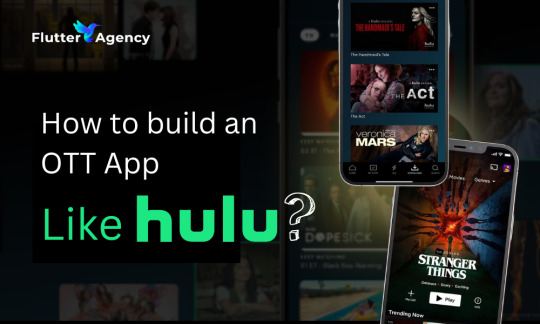
Streaming services have upended entertainment in recent years. On-demand content now flows to viewers whenever and wherever they want. These over-the-top platforms deliver shows and movies directly, bypassing traditional distribution channels. The shift has transformed how we watch, giving us unprecedented control and choice. They offer more flexibility than traditional TV’s rigid schedules.
Streaming giants Netflix, Disney+, and Hulu spearhead a worldwide entertainment revolution. More viewers prefer this convenient, customizable option.
OTT platforms soar as viewers crave personalized content. This surge sparks a parallel demand for tailored mobile app development, creating a symbiotic relationship between streaming services and app creators. These services help platforms deliver smooth, user-friendly experiences. They tailor them to diverse audiences. This makes OTT the top choice for entertainment.
What is OTT?
OTT (Over-the-Top) platforms are media services.
They deliver content directly to viewers online, bypassing cable or satellite TV. OTT platforms differ from traditional TV channels. They offer a vast library of on-demand content. This includes movies, TV shows, live events, and original productions.
Streaming services also deliver content online. This lets viewers watch videos on phones, tablets, smart TVs, and computers.
These platforms use advanced algorithms, cloud services, and smooth data streaming. This lets viewers enjoy high-quality content with minimal buffering. Hulu has used new technologies to improve user experiences. It offers personalized recommendations and ad-free viewing on multiple devices.
As OTT grows, custom mobile app development is key to success. It ensures apps perform well, engage users, and stream smoothly on all mobile devices.
Market Overview and Future Trends
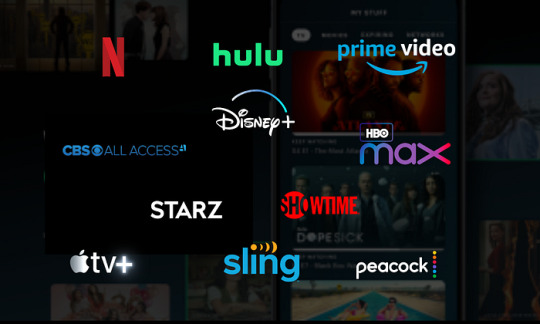
OTT services have seen huge growth in their global audience. Viewers flock to on-demand video streaming apps, abandoning traditional TV by the millions. This seismic shift reshapes entertainment consumption. Audiences crave flexibility, personalized content, and ad-free experiences. Streaming giants battle for subscribers, investing heavily in original programming. Meanwhile, cable companies scramble to adapt or risk obsolescence. As streaming devices flood homes, the living room transforms. Smart TVs now reign supreme, ushering in endless binge sessions. Algorithms shape our viewing habits, offering personalized picks at every turn. The way we consume media shifts, marking a new chapter in home entertainment. Growth will likely speed up. More consumers want easy, personalized access to their favourite content. Markets in Asia, Europe, and the Americas will see a big rise in users. This is due to better internet access and more content options.
Future trends show OTT app development is shifting. It’s moving toward better integration with smart TVs, voice control, and interactive features. Live streaming surges for sports, concerts, and news, making OTT platforms the prime real-time entertainment source. As immersive tech evolves, AR and VR will transform OTT experiences, offering users captivating new ways to engage with content. This shift promises a more interactive future for digital media consumption.
To stay ahead, many OTT platforms want to hire Flutter developers. They need cross-platform apps for seamless streaming on iOS and Android devices. Responsive, feature-rich OTT apps thrive on Flutter’s nimble framework. Its adaptability and swift performance empower developers to craft dynamic streaming experiences with ease.
Why Invest in an OTT App Like Hulu?
OTT apps like Hulu are popular now. People want on-demand content for its flexibility and convenience.
As more people leave traditional TV for streaming, businesses see great potential in custom mobile apps for OTT platforms. These services let businesses create solutions for their target audiences. They can use personalized recommendations, multi-device streaming, or exclusive content.
The OTT market has huge revenue potential. Projections show it will grow rapidly. Cord-cutting trends fuel explosive growth in the OTT market, projected to eclipse $250 billion by 2027. This seismic shift presents lucrative prospects for companies seeking to capitalize on streaming’s ascendancy. Digital platforms surge as cable falters. Smart companies seize this moment, innovating and growing in a flourishing sector brimming with untapped possibilities.
Netflix, Hulu, and Disney+ have made waves in entertainment. These streaming giants reshape how we consume media, challenging traditional TV and film. Their success stories reveal the power of on-demand content and personalized viewing experiences in today’s digital landscape.
Netflix transformed marathon-viewing and membership frameworks. Hulu combined live TV and on-demand content. Both set new standards for user experience.
Disney+ quickly became a dominant player with its vast content library and strong brand presence. These platforms show a demand for innovative OTT services. They also show that custom mobile app development can drive success in the industry.
Top Features of an OTT App
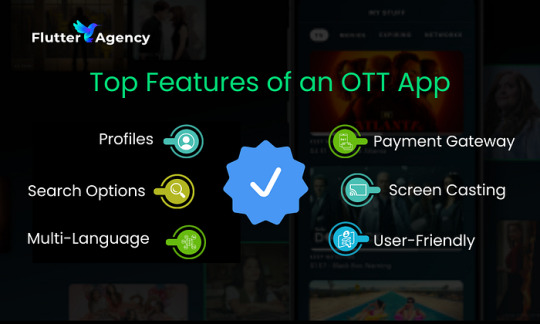
Personalized Profiles: This feature recommends content based on the user’s viewing history. This customization improves the user experience. It makes it easier to find relevant shows and movies.
Smart Search Options: Users can quickly find content with advanced search. It has filters, suggestions, and voice search. Content discovery flows effortlessly with intelligent search. Seamless efficiency defines this process, enhancing user experience. Smart algorithms sift through data, delivering relevant results swiftly.
Watchlist: Users curate their own media library with a watchlist. Saving favourites for later boosts retention and flexibility. This personalized collection fosters a sense of ownership, keeping viewers engaged and coming back for more. A simple feature with a powerful impact on the user experience.
Multi-Language Support: Multilingual options unlock worldwide appeal. Global reach demands diverse language support. This feature helps platforms reach new markets. It provides content and UIs in multiple languages, boosting accessibility and inclusivity.
Payment Gateway Integration: An OTT app can increase subscriptions. It can do this by offering multiple, secure payment options. Users can enjoy seamless transactions when purchasing or leasing content. The process eliminates friction, providing a sleek and effortless experience.
Screen Casting: Users crave flexibility in their viewing habits. The app’s casting feature delivers, enabling content to leap from small screens to TVs and projectors. This cross-device feature meets a need in today’s mobile world. Entertainment follows viewers everywhere they go.
User-Friendly Design: A smooth viewing experience depends on a straightforward, easy-to-understand design. OTT apps thrive with easy navigation and pleasing aesthetics. Smooth functionality across devices keeps users engaged. An effortless UI/UX is the cornerstone of user retention and satisfaction in the streaming world.
Monetization Models for OTT Apps
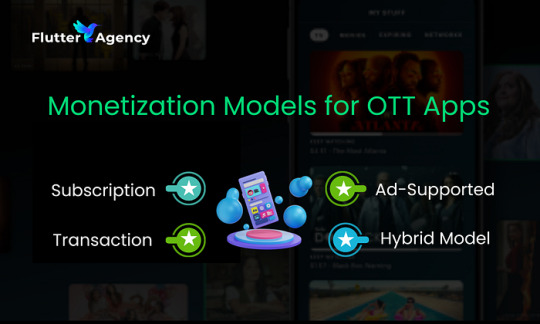
Subscription-Based (SVOD): Subscription-based platforms dominate content monetization. Netflix and Hulu exemplify this model, offering unlimited access for a recurring fee. Users enjoy diverse content while companies secure a steady income. This win-win approach fuels the streaming industry’s growth, satisfying both providers and subscribers alike.
Ad-Supported (AVOD): Free content comes with a catch: ads. Users watch commercials instead of paying. Platforms profit from advertisers, not viewers. This model flips traditional funding on its head, making entertainment accessible while keeping companies afloat through strategic marketing partnerships. This model is ideal for attracting a larger audience base that prefers free content.
Transaction-Based (TVOD): In a pay-per-view system, users pay for individual content, like movies or events. They do not subscribe to the platform. It lets users access premium content on demand. It offers flexibility for those who don’t want a full subscription.
Hybrid Model: Many OTT platforms now use a hybrid approach. It combines subscription, ad-supported, and pay-per-view options. This model is flexible. It caters to different audience preferences. It also maximizes revenue by using multiple channels. It allows platforms to reach a wider audience by offering both free and paid content options.
Steps to Build an OTT App Like Hulu
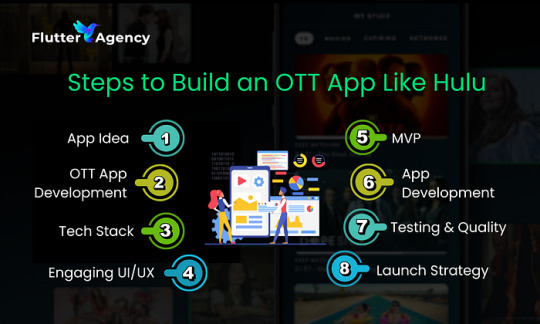
Defining the App Idea: First, identify your target audience. Then, show how your app is different from competitors. Research the market. Know user preferences. Find unique features to set your OTT app apart.
Consulting with OTT App Development Experts: Partner with a trusted firm that specializes in custom OTT apps. Consider hiring Flutter Mobile App Developers. They are experts in building fast, scalable, and cheap apps with great UX.
Choosing the Right Tech Stack: Choose scalable, high-performance tech for video streaming, real-time analysis, and secure transactions. Your stack should prioritize speed, reliability, and ironclad security measures. Opt for proven solutions that can handle growth while maintaining robust user protection. It must also handle high-traffic loads efficiently.
Designing an Engaging UI/UX: From sleek phones to expansive desktops, our design adapts flawlessly. Users navigate with ease, guided by clear pathways through content. Striking visuals enhance the journey, creating an immersive experience. Form and function unite in perfect harmony, captivating visitors at every turn. The result? A stunning, intuitive site that delights users across all devices.
Build the MVP (Minimum Viable Product): Stream, profile, pay — these core features form your MVP. Launch quickly to gather user feedback. Refine and improve based on real-world data before the full release. This lean approach maximizes efficiency and reduces wasted effort.
App Development Process: Move from design to backend development. Incorporate all essential features: content streaming, user management, and recommendation algorithms. Ensure proper content delivery mechanisms (CDNs) and high-end security protocols.
Testing and Quality Assurance: Test the app on various devices and OS. Ensure it works smoothly. Test performance, find bugs, and check security. Ensure an error-free experience for users.
Launch Strategy: Create a launch plan. It should promote the app on various platforms. It should optimize your app store listing. It should use social media marketing to attract initial users.
Post-Launch Support and Maintenance
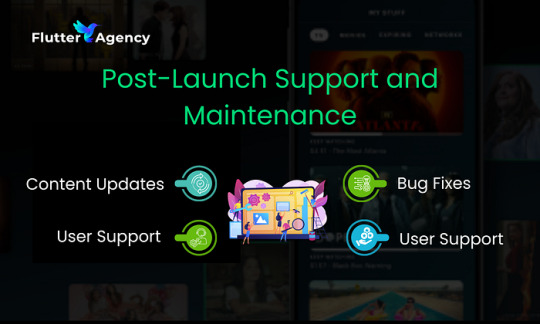
The Importance of Regular Content Updates: To keep users engaged, use fresh, updated content. Fresh content fuels user engagement. Frequent updates to your streaming library keep viewers coming back for more, ensuring your OTT platform stays relevant and exciting.
Bug Fixes, Feature Additions, and Continuous Improvements: Apps evolve after release. Fixing glitches, boosting speed, and adding capabilities keeps them sharp. Continuous improvement is key to staying ahead in a crowded market. No software launches flawlessly, but swift updates can polish rough edges and delight users. Custom mobile app development services can help. They can tailor updates based on user feedback and trends.
Providing Ongoing User Support: Quick, effective support breeds loyal users. Rapid responses and adept problem-solving boost satisfaction. Excellence in customer care fuels enduring success, cementing user relationships for the long haul.
Cost to Develop an OTT App
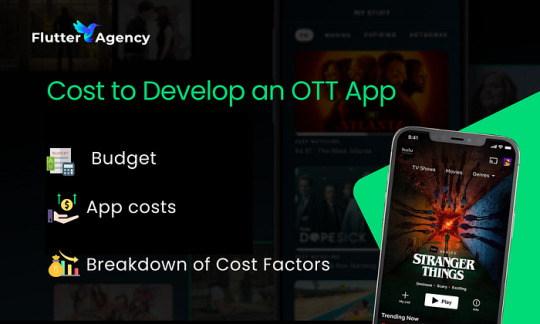
1. Breakdown of Cost Factors:
Design: UI/UX design to ensure a smooth and appealing user experience.
Development: Core functionalities like streaming, user profiles, and payment integrations.
Integrations: Third-party integrations enhance site functionality. CDNs speed delivery, payment gateways process transactions, and analytics track performance.
Post-Launch Maintenance: Post-launch, websites require continual care. Regular updates, optimizations, and support keep sites running smoothly and securely.
2. Typical Budget Range for Developing an OTT App Like Hulu
App complexity drives costs skyward. Hulu-like projects demand $100,000 to $500,000. Features, integrations, and platform support determine the final price tag. Developers must balance ambition with budget constraints. Smart planning minimizes expenses while maximizing functionality.
3. App costs hinge on several key elements
Feature count shapes pricing, with options like profiles or language support adding complexity. Integration intricacy also impacts expenses. Platform choice — iOS, Android, or web — further influences the final tally. These factors intertwine, determining your app’s ultimate price tag. Businesses seeking efficiency and cost-effectiveness often turn to Flutter developers. This versatile framework enables the creation of apps for multiple platforms using one codebase, streamlining development and reducing expenses.
Conclusion
Building an OTT platform offers huge opportunities. It lets businesses meet the rising demand for on-demand entertainment. A well-made app like Hulu can be very profitable. It can use different ways to make money. It can also reach a global audience with its advanced features.
The OTT market has vast potential for startups and established businesses. It is driven by changing user preferences and a shift to digital streaming. By using custom app development and top developers, companies can create a unique platform. Seize the moment. Launch your OTT app now to capture a slice of this thriving market. With skilled partners, cutting-edge technology, and a solid plan, you’ll create a standout streaming service. Don’t wait — your competitive edge awaits.
#Build a Cost-Effective OTT App Like Hulu#OTT App Development Company#Video Streaming Apps#OTT App Like Hulu#Streaming services#OTT app development#Build OTT App Like Hulu#OTT App Development Experts#hiring Flutter Mobile App Developers#Custom mobile app development services#Cost to Develop an OTT App
0 notes
Text
I just randomly remembered the Mulan animated movie and developed a silly idea. f!readerXmaskedman.
So the reader stumbles upon this masked guys channel. She saw many masked cosplayers, but this one... Well, he knows how to film, definitely knows how to wake thirst in his followers, edits his short videos magically, he literally can make her cry or laugh in just a few seconds.
So she follows him. At first, it's not a big deal: his vids just pop up on her fyp every now and then. She leaves a few comments, and one time he even makes a video response to something she wrote. A few times, she even catches his online stream. He's always quite, but even his streams feel like a safe haven: he films his walks, sometimes tinkers his bike, a few times he plays some musical instrument - a guitar or a piano, maybe. Always quiet, always in his costume, always bringing her a smile.
So little by little, she develops a crush. And she is not happy about that. She had enough of guys breaking her heart or just turning out to be douchebags. She promised herself to keep men away, treasure herself. On top of that, falling for a guy in a mask, she never even talked to, feels like sliding back to when she was 15 and could fall for anyone, who appeared to be edgy and enigmatic. And she's over that. So yeah, she's pissed about her feelings. Tries to ignore the guy, but can't help but smile each time the app shows her his new vid, and immediately curse herself for going that way again.
This could go on for a long time, but one day big news drop: the app is going to get banned in her country. A part of her celebrates, because it's high time she cuts the only connection to someone who endangers her happy crushless slumber.
On the last day she opens the app for the last time, checks all the accs, she's been subscribed to. And sees his newest video. "I guess, follow me on other apps, if you're still interested after what I'm about to show you" says the caption under it. She plays the video: It's him in his garage, he walks towards the camera, stops very close to it and removes his mask. And it's a girl. The most beautiful girl, she ever saw.
45 notes
·
View notes
Text
0 notes